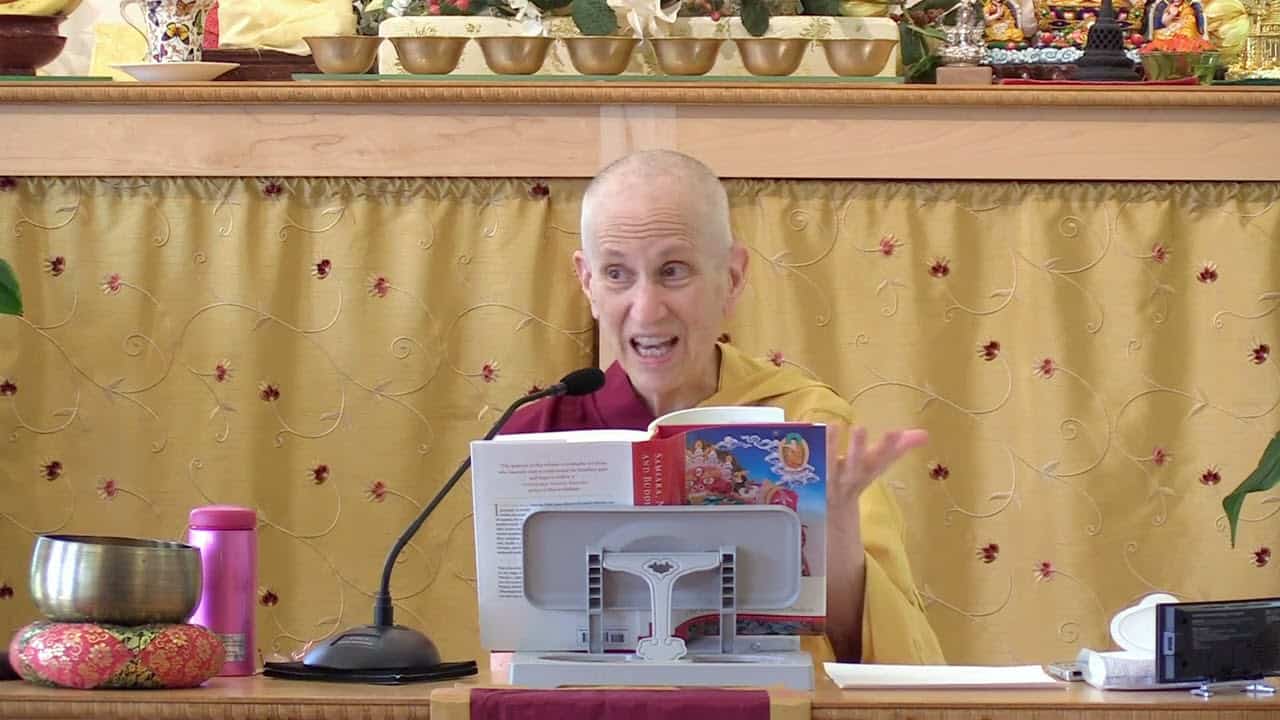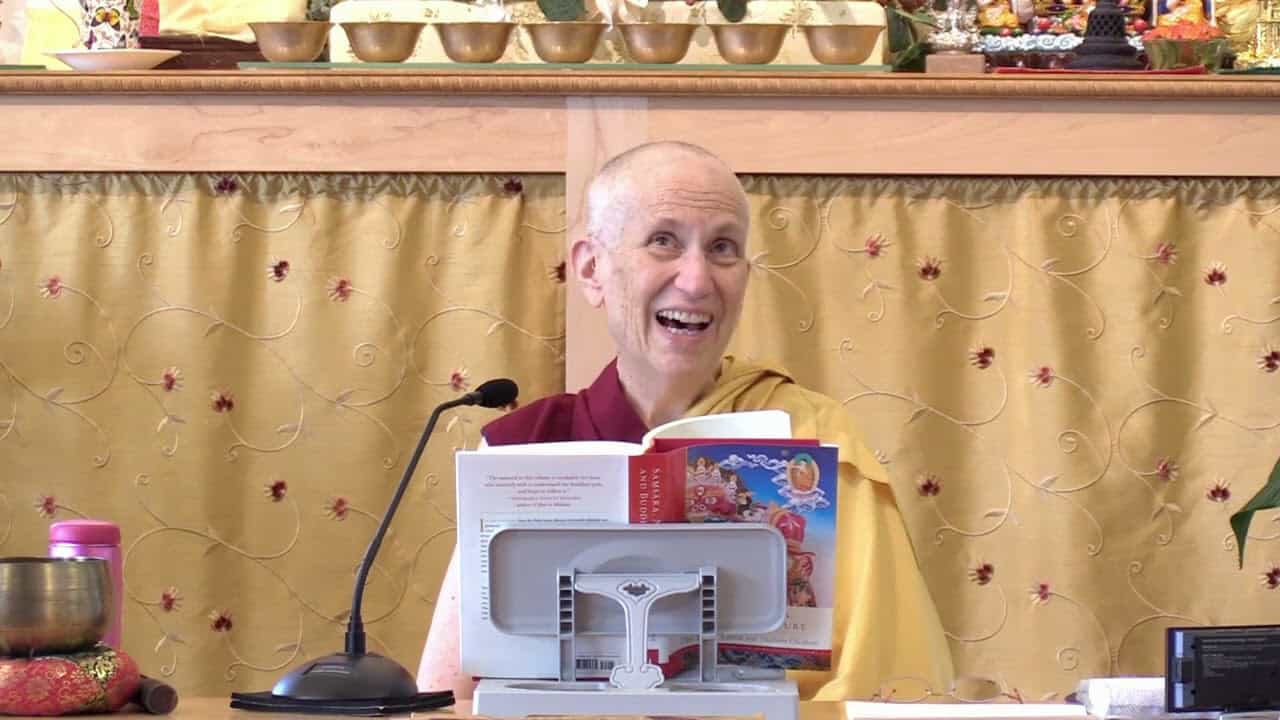True cessations
06 Samsara, Nirvana, and Buddha Nature
Part of an ongoing series of teachings (retreat and Friday) based on the book Samsara, Nirvana, and Buddha Nature, the third volume in The Library of Wisdom and Compassion series by His Holiness the Dalai Lama and Venerable Thubten Chodron.
- To be happy we need to make sure those around us are happy
- We need to apply the Dharma to all parts of our life
- Questions and answers
- The four types of cessations according to the Pali Tradition
Samsara, Nirvana, and Buddha Nature 06: True cessations (download)
Contemplation points
- Venerable Chodron spoke about breaking barriers between ourselves and others by holding the Dharma in mind. What Dharma practice helps you to break barriers with others that are different from you? Where do you need to improve? How can you maximize your awareness and application in daily life?
- Until we can cut ignorance at the root, we have to deal with afflictions as they come, eliminating that individual affliction temporarily. Take some time to walk through some personal experiences in your own mind. Bring up an event that triggered an affliction for you. Apply the antidotes. How does this transform the experience for you? How might you interact differently in the future?
- Reflect
- Remember a time when you applied an antidote to an affliction such as greed or the wish for revenge, and that affliction temporarily subsided.
- Consider that it is possible for afflictions to subside for a longer period of time due to the force of having strong concentration that makes the mind extremely tranquil and peaceful.
- Consider that it is possible to perceive reality directly and, by this, eradicate some level of defilement.
- Consider that it is possible to deepen and stabilize that perception of reality so that all afflictive obscurations are eradicated such that they can never return.
- Make a strong determination to do this.
Venerable Thubten Chodron
Venerable Chodron emphasizes the practical application of Buddha’s teachings in our daily lives and is especially skilled at explaining them in ways easily understood and practiced by Westerners. She is well known for her warm, humorous, and lucid teachings. She was ordained as a Buddhist nun in 1977 by Kyabje Ling Rinpoche in Dharamsala, India, and in 1986 she received bhikshuni (full) ordination in Taiwan. Read her full bio.


